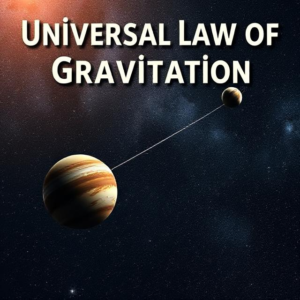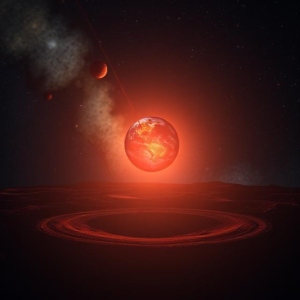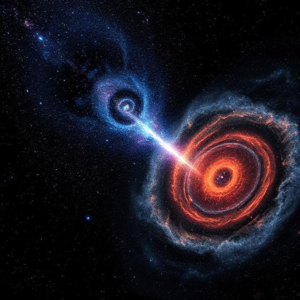Gravitational Constant and Universal Law of Gravitation: Explained Simply
1. What is the Gravitational Constant (G)?
The Gravitational Constant (often written as G) is a special number used in the formula for the Universal Law of Gravitation. It helps us calculate the force of gravity between two objects.
- The Gravitational Constant is always the same, no matter where you are in the universe.
- Its value is:
G = 6.674 × 10⁻¹¹ N·m²/kg²
This means the force of gravity depends on the mass of the objects and how far apart they are.
Think of G as a key that makes the law of gravity “work.” Without this number, we wouldn’t be able to calculate the gravitational force correctly

2. What is the Universal Law of Gravitation?
The Universal Law of Gravitation was first described by Isaac Newton in the 17th century. It explains how every object in the universe attracts every other object with a force. This force is called gravity.
The law says:
- Every object with mass attracts every other object with mass.
- The strength of this attraction depends on two things:
- The masses of the objects: The bigger the objects, the stronger the force.
- The distance between the objects: The farther apart the objects are, the weaker the force.
Formula for the Universal Law of Gravitation
The formula looks like this:
Where:
- F = Gravitational Force (the pull between the two objects)
- G = Gravitational Constant (6.674 × 10⁻¹¹ N·m²/kg²)
- m₁ = Mass of the first object
- m₂ = Mass of the second object
- r = Distance between the centers of the two objects
How Does the Formula Work?
- m₁ and m₂: If you increase the mass of either object, the gravitational force will increase.
- r: If you increase the distance between the two objects, the gravitational force will decrease. The force is inversely proportional to the square of the distance. This means that if the distance doubles, the gravitational force becomes four times weaker!
Examples to Understand the Law:
- Earth and an Apple: The Earth pulls an apple toward it because both the Earth and the apple have mass. The Earth’s mass is huge compared to the apple’s mass, so the force of gravity pulls the apple toward the Earth. This is why an apple falls when it’s dropped.
- Earth and the Moon: The Earth pulls on the Moon, and the Moon also pulls on the Earth. This mutual gravitational attraction is why the Moon orbits the Earth. The force of gravity is responsible for the Moon’s orbit!
3. Why Is This Important?
The Universal Law of Gravitation explains a lot of things we see around us every day, including:
- Why objects fall to the ground (because Earth pulls them).
- Why the planets stay in orbit around the Sun.
- How the tides on Earth are influenced by the Moon’s gravity.
- Why we don’t float off the Earth into space.
4. Let’s Look at a Simple Example
Imagine you have two objects:
- One is a small ball with a mass of 1 kg.
- The other is the Earth, which has a mass of about
.
- The distance between the ball and the Earth’s center is about 6,371 km (the radius of the Earth).
Using the formula:
After calculating, we get:
This force of 9.8 N is what we experience as the weight of a 1 kg object on Earth!
5. Why Does Gravity Matter in Our Universe?
Gravity is one of the fundamental forces in nature, meaning it affects everything from tiny particles to huge galaxies. It keeps planets in orbit, makes objects fall to the ground, and even holds entire galaxies together.
If there were no gravity:
- There would be no weight.
- Objects wouldn’t stay on the surface of the Earth.
- Planets and stars wouldn’t form.
- We wouldn’t be able to walk or move the same way!
Summary
- Gravitational Constant (G): A number used to calculate the force of gravity between two objects. Its value is
.
- Universal Law of Gravitation: States that every object with mass attracts every other object with mass. The strength of the attraction depends on the masses of the objects and the distance between them.
- Formula:
where
is the gravitational force,
and
are the masses, and
is the distance between the objects.
This law helps us understand everything from falling objects to the orbits of planets and the movement of stars and galaxies!











